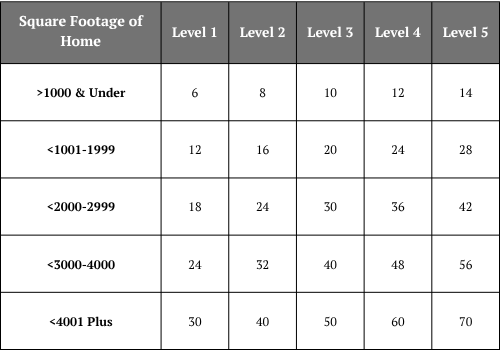Level 1
Stage: home appears tidy, all exits accessible, but storage spaces are overflowing.
Health & Safety Risk: no immediate risks, occasional misplaced items or excessive shopping habits.
minimal clutter in living areas
all doors, stairways, and exits are accessible
storage spaces are overflowing
Level 2
Stage: Clutter accumulating in areas, some difficulty organizing. Walkways remain clear, but excess items pile up in rooms.
Health & Safety Risk: Increased fire hazards near heat sources. dust and allergen buildup begin.
Clutter is present in at least two rooms, such as the kitchen and bathroom.
Light odors and evidence of mildew or mold may be present.
One exit may be blocked by clutter, and housekeeping is limited.
Level 3
Stage: clutter begins blocking exits or key areas, odors present, and pest infestations begin. Some rooms are difficult to use properly.
Health & Safety Risk: Rodent/insect activity, sanitation issues arise, mold growth, fire hazards increase.
Minor pest issues may start to appear.
At least one bedroom or bathroom is unusable.
Excessive dust, strong odors, and potential evidence of significant pet issues.
Level 4
Stage: structural damage, mold presence, severe sanitation issues. Multiple rooms become unusable. Exits may be completely blocked.
Health & Safety Risk: High risk of respiratory issues, fire hazards, toxic mold exposure, and bacterial infections. Biohazards like animal/human waste present.
Visible clutter may be present outdoors, and appliances like heating or air-conditioning might be unusable.
Most rooms in the home are unusable, and clutter blocks multiple exits.
Significant health hazards are present, including mold, pest infestations (like fleas), rotting food and evidence of structural damage.
Level 5
Stage: house is unlivable: no running water or electricity, severe biohazards, blocked exits, and extreme structural damage.
Health & Safety Risk: Life-threatening health risks: airborne bacteria, toxic mold, severe fire hazards, and potential structural collapse. Emergency intervention required.
The home is uninhabitable and may require professional demolition.
Severe structural damage, like crumbling walls, is common.
Pervasive mold, rodent infestations, and human or animal feces are present, creating significant biohazard risks.
